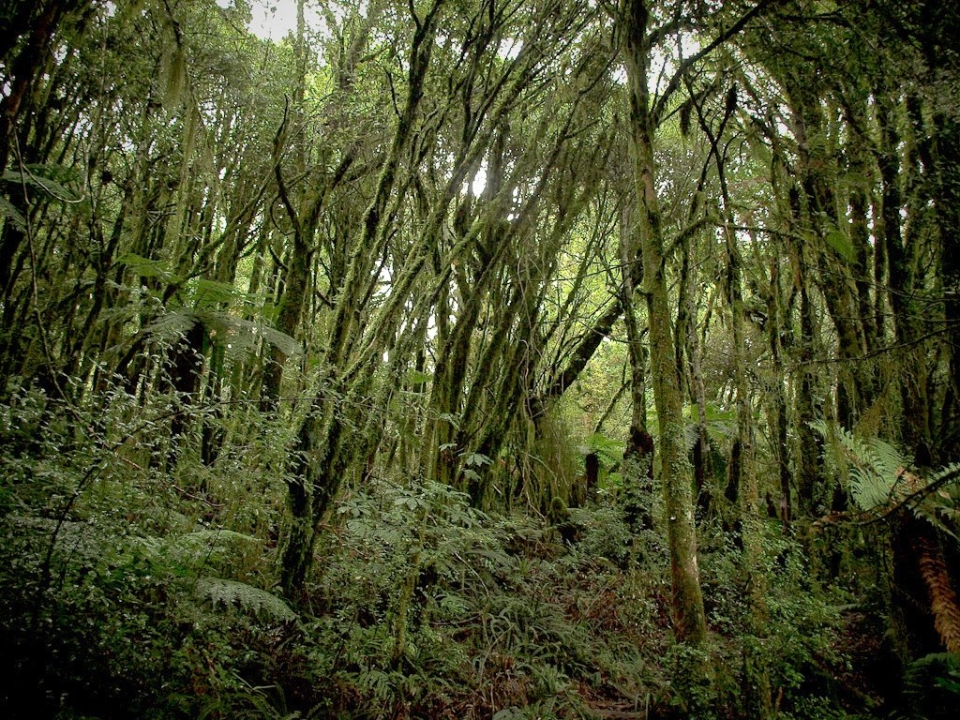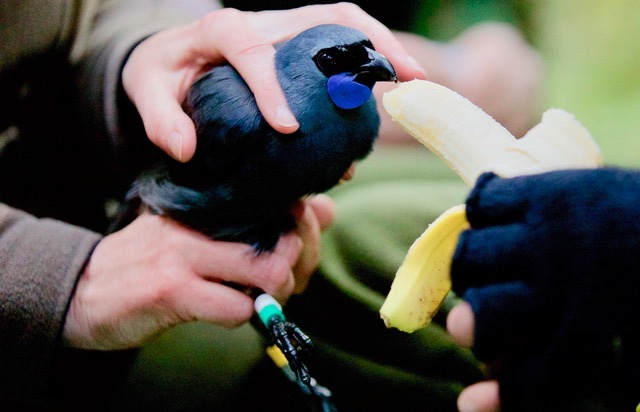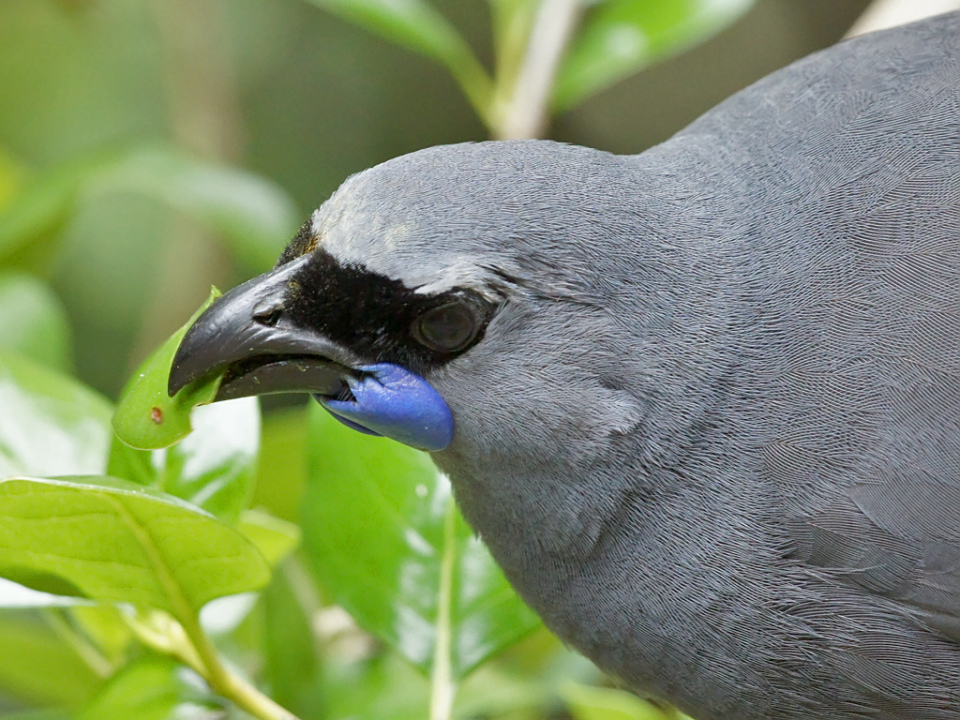Habitat loss
Historically, the range of the North Island kōkako has shrunk as its forest home has shrunk. According to Māori tradition the kōkako was once common on all the ranges of the North Island forests, and sub-fossil remains indicate a widespread distribution before the arrival of European settlers.
Three-quarters of native forests that existed a thousand years ago have now gone, causing the loss of many native birds. Only small pockets of forest now remain and introduced mammals, such as ship rats and possums are common.
Where can you see kōkako?
With the reduction in forest habitat and the introduction of predators North Island kōkako are now mainly found on offshore predator free islands and in: 
- Northern Urewera
- Bay of Plenty
- Waikato
- The King Country
- Tiritiri Matangi Island
- Northland’s kauri forests (in even fewer numbers).
What types of forest do kōkako live in?
Kōkako live in tall, diverse native forest, usually with a canopy of tawa or taraire with emergent podocarps or kauri. Kōkako feed on the tawa berries and help disperse its seeds.
Population
The North Island kōkako population has increased from about 330 pairs in 1999 to around 1595 in 2017 due to pest control at key sites, and translocation. The largest populations, with more than 100 pairs each, are in Pureora Forest, Hauturu (Little Barrier Island), Te Urewera, and Mapara (Waikato).
Breeding pairs and unpaired singles defend territories year-round by singing. These territories can range from 4-25 hectares so kōkako are not found together in large groups.
The oldest known-age of a kōkako is eleven years, but they may live for twenty years or more.
South Island kōkako
South Island kōkako were slightly smaller and darker than the North Island birds, with orange rather than blue facial wattles. In the early 1800s, they occupied beech forests and low scrub above the tree line on both sides of the Southern Alps from north-west Nelson south to Fiordland, and mixed podocarp forest on Stewart Island, plus some forested areas of Otago and Southland.
South Island kōkako numbers dropped dramatically after the introduction of cats, ship rats and stoats, and were very rare by the late 1800s. The range of the South Island kōkako shrank to Fiordland and Stewart Island, with the last accepted sighting at Mt Aspiring National Park in 1967.
Declared extinct by the Department of Conservation in 2008, the species' conservation status was moved from extinct to data deficient in 2013, leading to acceptance of a sighting from near Reefton on the West Coast of the South Island in 2007.
Complete the kōkako habitat quiz >







